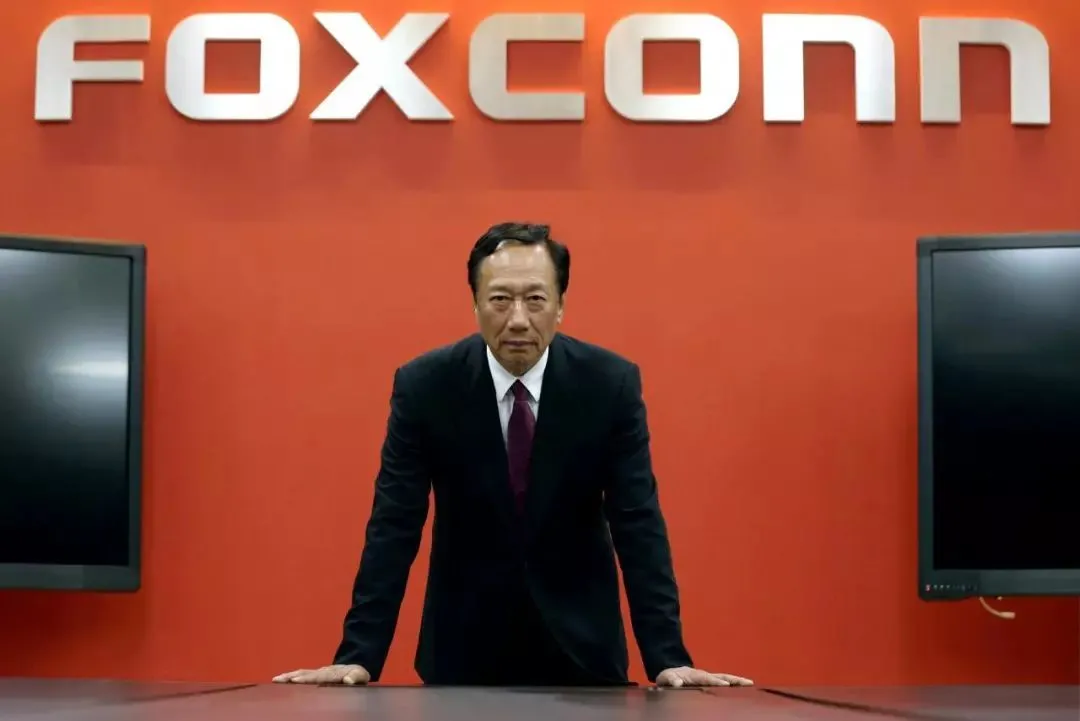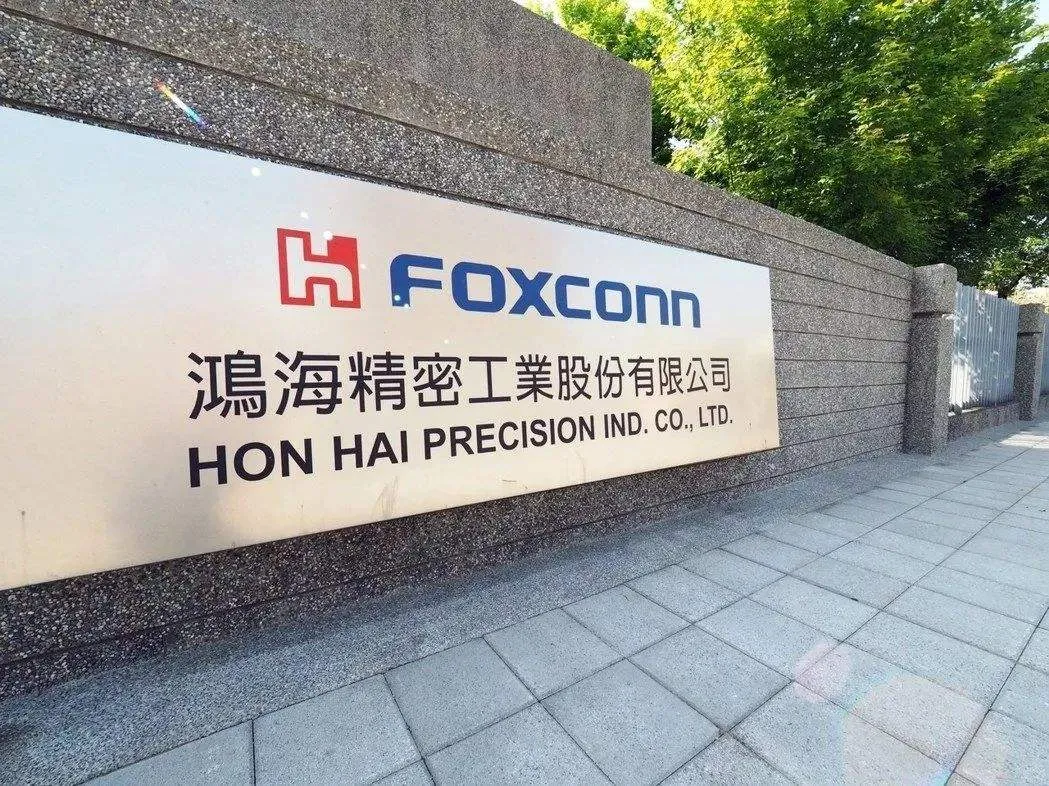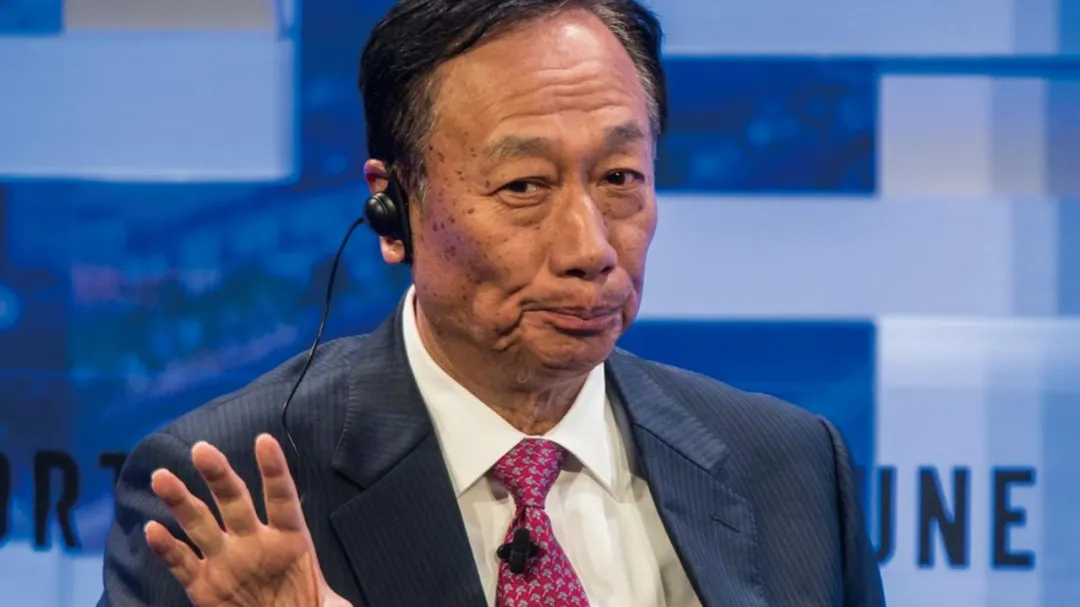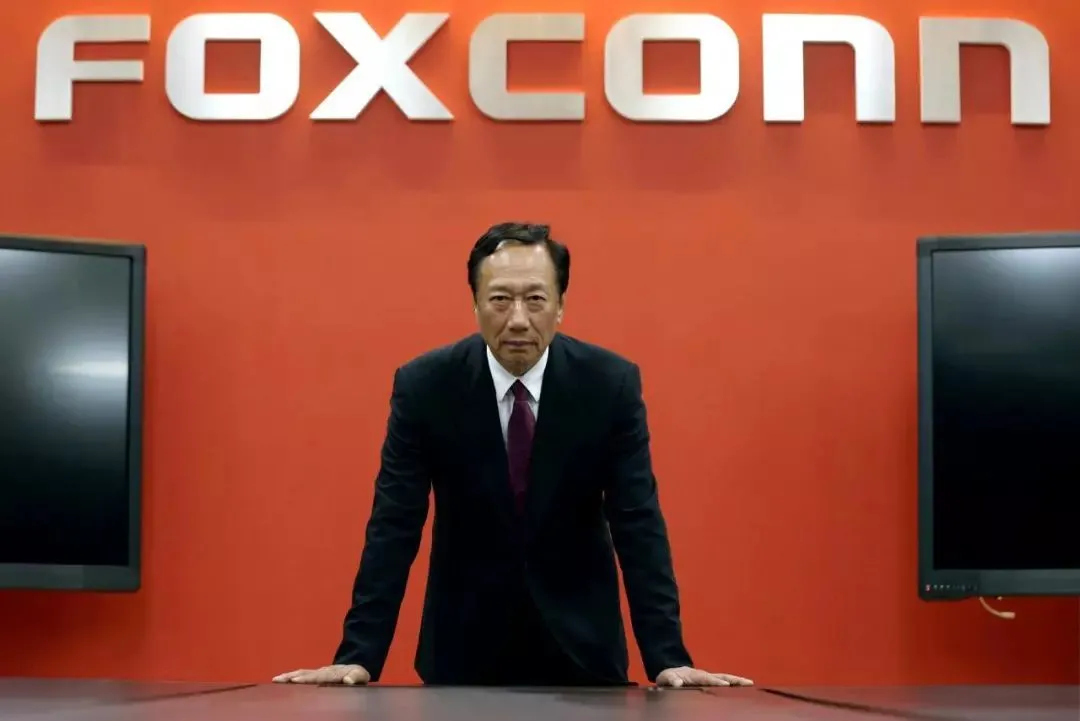Heading
Subheading
出行百人会旗下媒体,关注汽车出行产业链进化
原创 Roomy
Guo Taiming is a businessman who is good at standing on the windward side, with a strong personal heroism.
Every investment and layout is an attempt to make Hon Hai and its subsidiaries Foxconn stand on the windward side and “wait for the pigs to fly”. Where it’s hot, there’s Guo Taiming’s shadow, whether it’s cloud computing, the Internet of Things, big data, 5G, electric vehicles…
“Go where the sun sets and hit where it sets.”

His idol is Genghis Khan. He once went to Inner Mongolia to find the secret of “bending the bow to shoot the big eagle”, and got the above sentence. Later, he interpreted it as a management principle: direction, timing, and degree, all need to be completed at speed.
Indeed, Hon Hai has always followed Guo Taiming’s thinking.
At the age of 71, Guo Taiming still hasn’t lost his “wolf nature” and “lack of patience”. In recent years, Foxconn has been working hard to remove the hat of “OEM factory”. When profits and transformation cannot achieve balance, they start to sway left and right.
Travel, rental, car making, batteries, self-research… there is no industry that has entered the top of the industry.
Once they sense the risk, Foxconn quickly retreats to a safe zone, leaving their partners with nothing. Shallow interpretation is accurate to describe Foxconn.
Take “Foxconn car production” as an example. They began to take action in 2005, and most of them were hastily completed. Originally, they took the lead, but in the end, others were laughing.
“Bold ideas occupy the upper hand.”
The elderly who left Foxconn in Shenzhen still express dissatisfaction in their words, and sneer at Guo Taiming’s rhetoric of “for the dream”. Because besides his Mercedes-Benz S500 and Lexus LS430, he cannot show his enthusiasm for cars.
Inside Foxconn, Guo Taiming’s image is very clear. People who don’t understand him think that he is overbearing and even cunning; his supporters think that he is emotional and righteous. But there is one image that is consistent, “he is very arbitrary.”
Two years ago, Guo Taiming appointed Liu Yangwei to take over his position. He hoped that Liu Yangwei could accomplish two big things, one is the semiconductor and chip business, and the other is car production.

Did Guo Taiming, who had been running Hon Hai for nearly 50 years, just let go? Can Liu Yangwei lead Hon Hai across this transformation battle with life and death?
You know, the mission is not over. No matter who is on the stage, Guo Taiming will not leave. Just like Suzuki Shunji, who walked from the front of the stage to the back, he is still the real power holder of Suzuki, and every move still relates to the direction of the huge interest group.## Foxconn Goes Left, Huawei Goes Right
As the cloud gods on high, Guo Taiming’s every move has the power to sway the mortal world. At 71, can he steer the trajectory of the auto industry?
Before the rise of electric cars, Hong Kong’s wealthiest had never changed hands. But with the looming shift, the mantle of Hong Kong’s wealthiest has passed to someone else—Teng Hoi, replacing Li Ka-shing.
Perhaps this new kingpin’s name is less resounding than Li Ka-shing’s, but his company, CATL, supplies both Apple and Tesla under his leadership. Guo Taiming also invested in CATL.
In 2017, CATL became the global leader in the sale of electric vehicle batteries while Foxconn, which was experiencing sharp declines in profit margins, made Guo Taiming increasingly anxious. He began to reflect on whether his belief in the “fourth-rate talent, third-rate management, second-rate equipment, and first-rate customers” was still aligned with Hon Hai’s future aspirations.
While Guo Taiming has never expressed admiration for CATL, it is undeniable that Teng Hoi has satisfied both Elon Musk and Tim Cook, and as a crucial supplier for both, he has made Guo Taiming, who is eager to abandon the OEM label, increasingly envious and further from his title as Taiwan’s wealthiest man.
“Today, the only advantage Guo Taiming has left is money.”
Although their customers are globally distributed and cover almost all famous brands in the IT industry, former employees of Foxconn do not hesitate to criticize their former employer.
Taiwanese journalist Xiao Yifeng recalled that when Guo Taiming was late for meetings with Hon Hai executives and did not notify them, everyone sat waiting for him. Though everyone was hungry, no one dared to leave and eat.
Being strong-willed and autocratic, Guo Taiming is not someone that his employees tend to like. But he has never cared much about whether his employees like him, as transformation has long been his main agenda.
Hon Hai has always aspired to shed its label as a “manufacturing company” and become a “technology services company.” In addition to CATL, Huawei’s rapid progress in the technology field in Shenzhen has also disrupted Guo Taiming’s tranquility.
For thirty years, Guo Taiming and Ren Zhengfei have managed to maintain a peaceful relationship. Along Shenzhen’s Mei Guan Expressway stands a roadside sign that reads “Foxconn – Huawei”—one left, one right.
In Shenzhen, there is a saying that “two men, one city, one era” refers to Ren Zhengfei and Guo Taiming.
In October 1988, Guo Taiming stood on the land in Longhua, Shenzhen, facing a grassy wilderness taller than himself. Like Genghis Khan, his idol, he waved his hands and declared, “I want all the visible land,” his enthusiasm indescribable.# 1988 is a year worth writing repeatedly. In the same year, Huawei quietly entered the village, and Ren Zhengfei, who was forty years old, started from scratch. Unlike Terry Gou’s high-profile approach, Ren Zhengfei only appeared in public after accepting an interview.
Huawei and Foxconn rose up in Shenzhen. Foxconn, located in the west, is a symbol of manufacturing, while Huawei, located in the east, represents technological ambition.
At its peak in 2007, Terry Gou attended Alibaba’s 2nd e-commerce conference at the invitation of Jack Ma. Jack Ma said, “Foxconn is the elephant of the manufacturing industry, and Alibaba wants to use many ants to overthrow you.” The two had a lively debate.
In the end, no one convinced the other, but ten years later, Huawei’s sudden rise convinced Foxconn.
The same road leads to two different worlds. Foxconn goes left while Huawei goes right. It’s reminiscent of the current situation of the two companies. Faced with the same fanaticism, Huawei has become the technological backbone for car companies to seek cooperation in autonomous driving and smart manufacturing, while the exhausted Foxconn needs to find new transformational points.
Terry Gou once complained, “Huawei’s Ren Zhengfei’s company is next door. Many of our colleagues have resigned and gone to Huawei, and they can get twice the salary.” Foxconn, which has enjoyed 20 years of labor dividends and always regarded talent as “low-class,” is no longer welcomed in Shenzhen.
Nevertheless, Terry Gou has high praise for Huawei, even though he has never been a “technology maniac.”
“Because Huawei has vision, the more patents it has, the stronger its competitiveness.” In the current technological transformation, Terry Gou, who believes in Genghis Khan, Guan Gong, and Mazu, has finally realized the importance of talent.
Another factor comes from Apple. Apple is seeking diversification of its product supply chain to balance Foxconn. Under Apple’s control, with low gross profit and weak bargaining power, Foxconn’s gross profit margin is around 5%, only 1/8 that of Apple.
As the money earned becomes less and less, Terry Gou has figured it out. He needs to find a “vision” for Foxconn and for Hon Hai.
The competition core has shifted towards technology, and Foxconn has seen new opportunities. “What I am best at is layout.” For the sake of supply chain layout, for the survival of the enterprise, he is making a layout.
Now, Terry Gou has laid the groundwork for “car manufacturing.”
Getting up early but still missing the late show
When talking about the connection between Terry Gou and the automobile industry, there is one person that cannot be avoided.
That is, Wang Chuanfu, who recently made the statement, “it’s a small matter that big names lose money on car manufacturing, but wasting three years is a big deal.””If there is no precise strategy, it will lead to losses. Although losing money is not important to giants like Lei Jun, wasting three years of time is. ” Wang Chuanfu mentioned Lei Jun and also made a veiled attack on the tech giants who intervened in the car-making industry, including Terry Gou.
Speaking of Wang Chuanfu, there is an old grudge that made Terry Gou lose face.
In 2006, a Foxconn employee defected to BYD to serve as the head of the mobile phone design department. Terry Gou accused BYD of stealing Foxconn’s trade secrets and angrily condemned them as “a bullshitter and a stock speculator.” He vowed to fight the lawsuit against BYD to the end in his lifetime and even sued investor Buffett.
“A few years ago, Wang Chuanfu came to me and asked Foxconn to help him make battery shells, and I took him to visit Foxconn’s factory.” Terry Gou’s grievance did not survive the test of time.
The lawsuit lasted for five years without any result, and the “Fu-bi case” was closed. Apple’s order diversion and the “sweatshop” label made Terry Gou agitated and unwilling to fight.
While Foxconn was building factories in India and Southeast Asia, BYD, along with Luxshare Precision, founded by a former Foxconn Longhua factory worker named Wang Laichun, quickly rose to become Foxconn’s rival and penetrated Apple’s product supply chain.
In addition to Huawei, Xiaomi also handed some of its production orders to BYD. The growth of numerous OEM manufacturers has been accompanied by erosion and seizure, and Foxconn’s competitiveness is rapidly being weakened.
The reality is almost like a script. Now, it’s Wang Chuanfu who is ignoring Foxconn. Especially in car-making, Foxconn has become BYD’s junior. One went from defense to offense, while the other hasn’t even built its moat yet.
While providing OEM services with one hand and making cars with the other, Wang Chuanfu has become the recognized “person Terry Gou hates most.” However, compared with grudges, whether Terry Gou and Foxconn can catch up with this trend is a matter of life and death.
Car-making is not a spur-of-the-moment decision, but can be traced back to 2005. That year, Foxconn purchased Anya Electric, one of the four largest automotive wire harness manufacturers in Taiwan, and began making vehicle electronics such as battery wires, parking radar, and smart devices, which was seen as a starting point for entering the automotive industry.
Chinese domestic car brands such as Geely, Chery, and BYD were born around 2003. In terms of time, Foxconn started early by entering the automotive industry in 2005.
Over a decade has passed, and Terry Gou has spent a lot of time on car-making.”Whenever Yulon is willing to make solar cars, Foxconn will buy Yulon’s cars.” In 2009, Terry Gou shouted to Yulon’s late chairman Kenneth Yen. In 2011, Foxconn invested 1 billion USD to establish a factory in Shenyang, Liaoning to produce auto parts. In 2013, Foxconn entered the supply chain of Tesla, Mercedes-Benz, BMW, and other car makers.
In 2015, Foxconn teamed up with Tencent and Harmony Auto to establish a new car company, which was the predecessor of Byton and Aiways — Harmonious Futauto (Harmony Futeng). In 2016, Foxconn withdrew from the project. Terry Gou, who felt that making cars was not easy, also said that he was disheartened by the idea of making cars.
A year later, when NIO ES8 was listed, Terry Gou had a two-hour private meeting with NIO founder William Li. One month later, he regained his confidence and did not invest in NIO, but participated in the B round of investment in XPeng. In addition, he also invested 800 million yuan in Didi to enter the ride-hailing market.
Compared to Xu Jiayin, who was shouting “hundreds of billions to make cars, trillions of output value,” Terry Gou’s approach to car making is relatively low-key. However, sometimes, he lacks persistence. To put it nicely, he can sense danger and act quickly, like his enthusiasm for Harmony Futauto, which lasted only a year before he withdrew.
According to Terry Gou’s longtime colleagues, when he believes that he has the ability to expand into a larger market, he will never hesitate. But once the crisis is apparent, he will quickly make some adjustments. Just like withdrawing from Harmony Futauto after a year of enthusiasm.
Terry Gou is too “indecisive,” especially in the fields he is not familiar with. Although he has been planning in the automotive field for 16 years, what he gained from his previous layout is only a few scraps. In terms of “soft power” such as car networking and autonomous driving, it is difficult to associate them with Foxconn.
“The recession is the best time to train soldiers.” He often said this, but he often failed to follow it. Entrepreneurs always have some regrets after review. Like the landing of HarmonyOS, Jack Ma began to review Alibaba and thought that the number one thing he should have persisted in but did not was the Yun OS operating system.
Like his old friend Jack Ma, Terry Gou dumped all of his Alibaba shares and conducted a “car manufacturing” review a few years after withdrawing from Harmony Futauto.
It wasn’t until October 2020 that Liu Yangwei first introduced Foxconn’s ideas for entering the automotive industry: Foxconn will not build its own electric car brand but hopes to become the Android of the electric car industry. Foxconn wants to replicate its past advantages and experiences in car manufacturing. The strategy is still to “cast a wide net” and urgently seek car-making partners. How long Terry Gou can persist this time is unknown.
However, as a “junior” of BYD, is Terry Gou, who loves face, willing to accept it?
After 16 years, he is still a new soldier in the car-making industry.”Tesla is the iPhone of electric cars, and we hope to become the Android of electric cars.” Foxconn urgently wants to find its own position.
71-year-old Terry Gou’s entry into the auto industry is not that of a hardship, backed by the support of Foxconn’s manufacturing empire.
Foxconn’s vertical integration has always been “if you can’t beat them, buy them.” After the acquisition of Sharp in 2016, Foxconn’s layout in the semiconductor field has accelerated. “Every time Terry Gou goes to Japan, he talks so much that he turns red.” Some Japanese media said.
In addition to LCD panel production, Foxconn’s strengths lie in the production of components such as automotive systems and connectors that they “bought out” before.
Huawei and Ningde Times are currently Terry Gou’s targets for success. Its subsidiary, FIT, is viewed as key to Foxconn’s transformation into a technology company.
“Don’t say we are just a factory,” Terry Gou emphasized in his elective course at Tsinghua University, “we are a smart manufacturing base.” He spared no effort in telling the story of “smart manufacturing” and transformation for FIT.
This 3C contract manufacturer, who does not wish the roar of machines to be the symbol of the enterprise, is striving to make semiconductors and car manufacturing the new journey. Giving manufacturing the “chip”, putting on the “logo”, and becoming the future Huawei is the responsibility that Terry Gou has given to Liu Yangwei.
In order to enter the game faster, Foxconn started to copy the familiar way in the past and became a “Sea King” in the auto industry, accepting all comers.
Stumbling into the “automotive circle” and seeking a role change, Foxconn has two ways of playing:
Acquisition/joint venture to fill gaps. Joint ventures with Yulon, FCA, and others to gain access to electric vehicle platforms, and expertise in model development and manufacturing. Re-entering Byton to supplement models, factories, and qualifications.
Launch an open electric vehicle platform, MIH. Currently, the MIH platform has 700-800 partners, with a large number of partners but generally low strength. Wei Guozhang, head of MIH platform software, hopes to see a “softer Foxconn” on the MIH platform.
The goal is not to compete head-on with new forces but to explore the possibility of entering the production and manufacturing of electric vehicles. The plan is to provide components or services to 10% of the world’s electric cars between 2025 and 2027.
Foxconn is helping MIH Electric Vehicle Alliance find a way out, including Fisker, Byton, and others. “We already have more than a dozen cards to play,” said Liu Yangwei.
“Don’t compete in building factories with others, but compete in design, supply chain, and components.” A Foxconn executive revealed that they can take over a Geely factory to produce modified products.Fuji Foxconn’s strengths lie in manufacturing and supply chain management, electronic component research and development, and abundant resources. There is a gap between them and their potential competitors in areas such as connected cars and autonomous driving.
Can previous experience and technology be replicated in the field of electric vehicle production? The situation is not as easy as one may think.
Currently not only Fuji Foxconn, but also BYD, which has opened its E-platform, and Volkswagen, which has opened its MEB platform, have opened their electric platforms. At the same time, top companies such as Tesla and NIO have formed certain barriers at the software level, controlling the link from research and development to production in their own hands.
Musk once bluntly stated, “Compared to smartphones and smartwatches, the complexity of cars is very high. You can’t go to suppliers like Foxconn and ask them to build a car for you.” However, Foxconn has already become a supply chain partner of Tesla.
“I don’t have any advantages, the only advantage is hard work to make up for my shortcomings.” However, time is running out for old Guo to make up for his shortcomings, and the lack of foundation in auto manufacturing increases the risk of failure.
Foxconn, which has not yet touched the threshold of car manufacturing, is still a newcomer after 16 years.
Cast a wide net and submit a manifesto?
“Guo Tai-ming has never made any money investing in the automotive business,” says everyone who knows.
After the bankruptcy of Harmony Futung, Foxconn’s layout became more conservative, mainly in investment, and has successively invested in Didi, Ningde Times, and XPeng…
Has Guo Tai-ming, born in a rural family, the son of a police officer, known for being “powerful, ruthless, and fierce”, changed?
Not really.
In order to transform, he sold almost all of his Alibaba stock holdings last October. 13 years ago, with an investment of HKD 270 million in Alibaba, Guo Tai-ming received a return of 30 times. At this point, he has a cash reserve of CNY 69.5 billion. Although it is still lower than Lei Jun’s CNY 100 billion, it is enough to cast a wide net.
Guo Tai-ming once said, “Business management does not look at stock prices, but at the future.” Liu Yangwei is the future he chose. Taking over the world’s largest factory, the pressure is great.
At the Fuji Foxconn shareholder meeting in June 2020, Liu Yangwei outlined Hon Hai’s future. In the next five years, it will divide its operating direction into three major future industries: electric cars, digital health, and robotics, as well as core technologies.
Foxconn has reached cooperation agreements with Stellantis Group, US electric vehicle manufacturer Fisker, and Dongfeng Motor to jointly develop and produce pure electric vehicles. Guo Tai-ming hopes to break free from dependence and achieve technological upgrades.
It can be seen that Guo Tai-ming is anxious.On January 13th this year, Terry Gou, who had not appeared in public for a long time, wore a gray suit and appeared at the signing ceremony between Geely and Foxconn.
In addition to Terry Gou, Huang Qiulian, the group’s CFO, also appeared. With Huang Qiulian present, it usually means that it is an important occasion for Foxconn’s strategic layout and development.
In the layout chain, Foxconn still needs a controllable vehicle factory. After giving up for 5 years, Foxconn returned to Byton.
“Cooperating with Byton is an important part of our layout in the field of electric vehicles.” After taking over Byton once again, Foxconn’s puzzle of making cars can be considered complete.
For Byton, Foxconn is a timely help, but it is not ideal for almost bankrupt Byton. However, Terry Gou had no choice, there were really no better options.
What interests Foxconn is the vehicle model that Byton has already launched, the ready-made factories, and the production qualifications. Terry Gou appointed Ding Qingfen to be responsible for Byton’s business. This gentle woman took up the burden of saving Byton as a joint CEO.
It is said that she only gave herself 5 minutes to consider.
After taking office, the first thing she did was to “cut off what should be cut off and keep what should be kept”, which was supported by Boss Gou himself. Terry Gou personally talked with her once about the future of Byton.
“Within a week of signing the framework agreement, more than 10 Foxconn employees have settled in Byton.” In addition to dispatched employees, an electric vehicle industry cluster will also be established in Nanjing.

Is 69.5 billion RMB enough to burn? Can it burn until Apple’s car is launched?
Getting the qualification to make cars and a well-equipped factory, and joining hands with Geely to make up for the shortcomings of complete vehicle manufacturing have been interpreted as Foxconn’s “letter of commitment” to undertake Apple’s automotive business.
It is well known that who will produce cars for Apple is not so important. In Apple’s eyes, Hyundai, Foxconn, and others are equally important. Judging from Apple’s previous experience with top car companies, it is difficult for Foxconn to catch Apple’s eyes when it comes to producing cars for Apple.
If you want to be on the list of companies that work with Apple to produce cars, you must have enough experience in car production. For Foxconn, this also relates to whether its core competitiveness can continue.
Of course, Terry Gou’s bottom purchase of Byton is not just for Apple. After all, once you have control of Byton, you have obtained a ticket to enter the car-making circle. It can also be considered as blindly entering the car-making field.
However, Terry Gou, who failed to build factories in the United States and India, has to answer a question: Does he really need to produce cars?
Reference:
Fan Tongdai’s “Shenzhen Manufacturing: Huawei and Foxconn in the Historical Process”
Intelligent Relativity’s “Foxconn and its ‘car manufacturing dream'”
Auto headline’s “Terry Gou’s car-making story”
Danleng Street No.3’s “Exclusive Reveals! The journey of Foxconn and Byton’s shareholders’ game”
Dazong Neican’s “Terry Gou: 70 years old, telling a new story | In-depth interpretation”
This article is a translation by ChatGPT of a Chinese report from 42HOW. If you have any questions about it, please email bd@42how.com.
